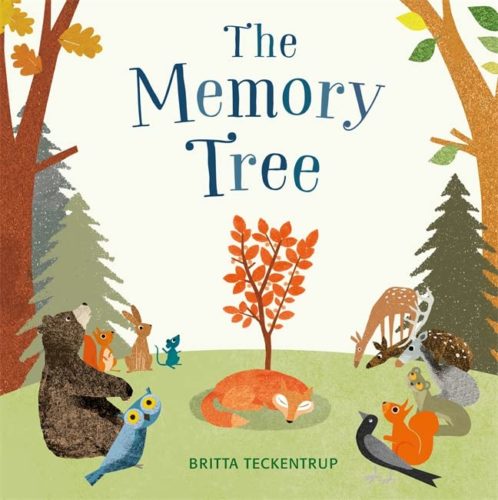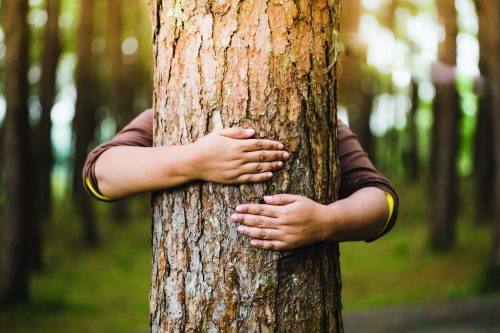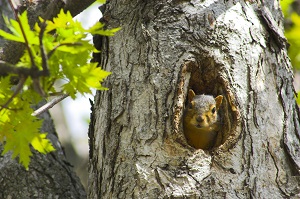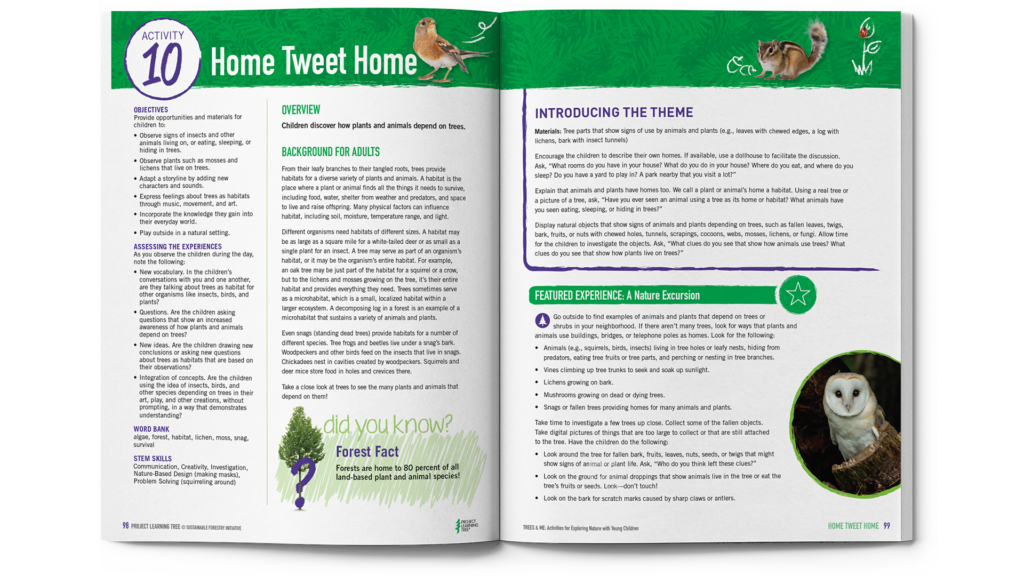 The Memory Tree
The Memory Tree
Grades: Pre K-K
Written by: Britta Teckentrup
Published by: Orchard Books, 2014
ISBN-13: 1408326345
Recommended Reading
Teaching young children about the loss of a loved one can be a difficult topic.
In this picture book, a fox lives a long and happy life in the forest, but he is now ready to sleep and closes his eyes forever.
As the fox’s friends begin to share memories and tell stories, a tree starts to grow taller and stronger with every memory.
The connectedness of nature
When a tree falls to the ground, it remains an essential part of the forest ecosystem. It’s incredible how many things live in and on fallen trees.
After a tree falls, it provides food for insects, which opens the way for fungi to decompose the inner log. Mammals, birds, and reptiles use logs as shelter and nursing dens. Small animals use logs as tunnels to navigate through the forest. New life then begins to form as the decaying log becomes a nursery for new plants. The natural process of life and death shows how interconnected nature is.
Fall is an excellent opportunity to take children outdoors and explore the changing seasons, signs of decay, new life, and life cycles. Teaching children about the natural process of life and death using nature can help start difficult conversations about handling grief and loss.
The circle of life and compassion

As a mom of a toddler, I know the importance of allowing your children to feel a range of emotions. When I first began reading The Memory Tree, I felt a sense of sadness and grief as the book started with the passing of a fox who lived a long and happy life in the forest.
As the story progressed, it brought forward the joy and happiness that comes with reflecting on someone’s life and your friendship with them.
The story follows a fox who has reached the end of his life and finds a comfy place in the forest to spend his last moments. As he passes, he is joined by his friend, the owl, who comforts him. Slowly other animals arrive to acknowledge the passing of the fox and collectively reflect on fond memories they had with the fox—whether it be frolicking in the forest, enjoying a sunset, or exploring for food.
New life begins to emerge as a seedling peeks through the soil towards the sun from where the fox lays. The seedling grows into a big tree, which continues to provide life for the animals of the forest—and the fox’s story lives on.
The web of life
The story of the fox explains the relationship between creatures of the forest and how everything is connected. It allows parents to explain the concept of the web of life to children – mapping out the connections between food sources, trophic levels, and what relies on what.

Working together
The story tells the important narrative around mutualism (a relationship where all species involved benefit from each other).
While we can often see the connections between animals and only being food related, there are ways that animals work together to coexist. This is also true for plants and animals, and how a tree becomes an essential home for a diversity of animals – whether by providing a place to nest, shelter, or food.
The circle of nature
The story also tells the importance of circularity and how death helps create new life. Older children can take this lesson a step further to explore the role of different producers, consumers, and decomposers.
An example of can be observed when falling leaves turn into soil that supports further growth of plants and homes for small critters. When an animal passes, the animal in absorbed back into the earth to help contribute to healthy and vibrant soil that supports the forest and new life.
As we reflect on the memories of someone, we can learn to let go of the grief and move forward with positivity and a little more lightness in our hearts, knowing their memory lives on.
PLT Activities
Exploring forest interactions, relationships, and regeneration can be done at home or school. We’ve listed activities taken from various PLT products that can help you approach the topics of regeneration, understanding connectedness, and forests as habitats.
 Use this book with the following activities from PLT’s NEW Trees & Me: Activities for Exploring Nature with Young Children:
Use this book with the following activities from PLT’s NEW Trees & Me: Activities for Exploring Nature with Young Children:
- Fall for Trees
- Home Tweet Home
Use this book with the following activities from PLT’s Pocket Guide: Seeds to Trees:
- Dramatic play aloud – Grow from a seed
- Trees in our lives
Use this book with the following activities from PLT’s flagship curriculum Explore Your Environment: K-8 Activity Guide:
- Trees as Habitats
- Fallen Log
- Signs of Fall
- Nothing Succeeds like Succession
Try a few of our free and simplified PLT activities, perfect for families:


